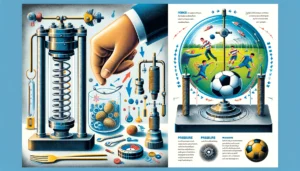Introduction
In today’s technology-driven world, equipping students with innovative skills is crucial for future readiness. India’s Atal Tinkering Labs (ATLs), launched under the auspices of the Atal Innovation Mission, are spearheading this educational revolution. These labs transform traditional learning environments into interactive spaces where students can explore STEM disciplines and develop critical thinking and problem-solving skills. By fostering a culture of creativity and innovation, ATLs are preparing the next generation to tackle future challenges and opportunities.
What are Atal Tinkering Labs?
Definition and Overview
ATLs are state-of-the-art workspaces established within schools across India, aimed at cultivating the innate curiosity and creativity of students. These labs provide hands-on access to advanced technologies such as robotics, 3D printing, electronics, and the Internet of Things (IoT), thereby encouraging students to learn and experiment in an applied setting.
History
Initiated in 2016, the ATL project honors the legacy of former Prime Minister Atal Bihari Vajpayee and his vision for enhancing India’s scientific temper. The program’s implementation is a strategic push to integrate practical scientific education right from the school level.
Current Reach
To date, over 5,000 ATLs have been established in schools across every state of India, impacting over a million students. The initiative targets both urban and rural schools to ensure widespread access to the latest educational technologies.
Objectives of Atal Tinkering Labs
Key Objectives
The core objectives of ATLs include:
- Inspiring a deep interest in science and technology to nurture a new generation of innovators.
- Developing technical acumen and soft skills such as analytical thinking and collaborative problem-solving.
- Empowering students from various socio-economic backgrounds by democratizing access to cutting-edge technology.
Long-term Goals
The long-term vision of ATLs aligns with national objectives to position India as a global innovation hub. By investing in young minds, the initiative supports the broader agenda of fostering a technically proficient and creative workforce that can propel India’s growth in the coming decades.
Features of Atal Tinkering Labs
Infrastructure
ATLs are equipped with modern educational tools and technologies. From programmable robots to computer numerical control (CNC) machines, each lab is set up to provide a practical, hands-on learning environment that stimulates learning and innovation.
Curriculum
The curriculum designed for ATLs is dynamic and adaptable, intended to keep pace with global technological advancements. It includes thematic areas such as robotics, mechanical and electrical engineering, and software programming, along with emerging fields like artificial intelligence (AI) and machine learning.
Special Programs
ATLs frequently host national and international competitions, hackathons, and innovation camps in collaboration with leading technology companies and educational institutions. These events are crucial for providing students with platforms to showcase their inventions and gain exposure to the global innovation ecosystem.
Impact of Atal Tinkering Labs
Case Studies
Success stories from ATLs include students developing eco-friendly solutions like biodegradable plastic alternatives, automated water quality monitoring systems, and AI-based healthcare applications. These projects not only demonstrate the technical skills acquired but also reflect the social consciousness instilled through the ATL initiatives.
Statistical Evidence
Quantitative studies indicate significant improvements in problem-solving capabilities, technical proficiency, and interest in STEM careers among students participating in ATL programs. Schools with ATLs consistently report higher student engagement and academic performance.
Testimonials
Feedback from participants and educators highlights the transformative impact of ATLs. Students express increased confidence in handling complex projects, while teachers observe notable advancements in their students’ abilities to think critically and work collaboratively.
Challenges and Future Prospects
Current Challenges
Despite the success, ATLs face challenges like maintaining state-of-the-art infrastructure, ensuring continuous teacher training, and scaling the initiative to reach every school in India.
Future Plans
Future plans include expanding ATLs to more schools, integrating advanced technologies like quantum computing and biotechnology into the curriculum, and enhancing partnerships with global tech leaders to ensure that Indian students are at the forefront of technological innovation.
How to Get Involved
For Schools
Schools interested in setting up ATLs can apply through the Atal Innovation Mission’s portal, where they can access funding, guidelines, and support.
Link –
CLICK HERE
For Students & Educators
Students are encouraged to utilize ATL resources to explore their interests in technology and innovation. Educators can receive specialized training to guide and mentor students effectively.
For the Community
Industry professionals and local businesses can support ATLs by providing mentorship, resources, and internship opportunities to help integrate educational initiatives with real-world applications.
Conclusion
Atal Tinkering Labs are more than just educational facilities; they are incubators for India’s future innovators. As these labs continue to grow and evolve, they promise to play a pivotal role in shaping a nation that not only adapts to technological changes but also drives them. Let’s support and promote ATLs as they endeavor to brighten India’s future through education, innovation, and persistence.








